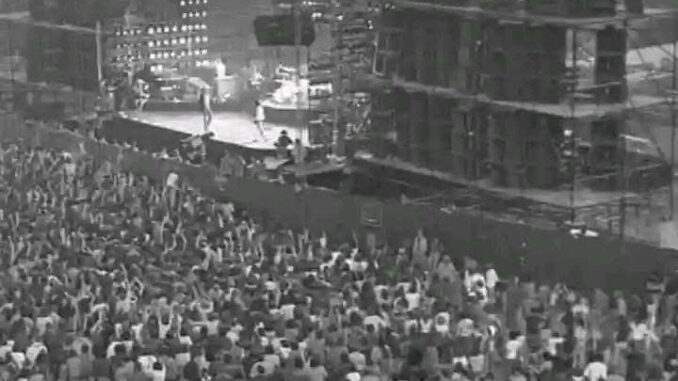
Led Zeppelin: Masters of Loudness and Live Spectacle
Led Zeppelin weren’t just a band—they were a thunderous, unrelenting force of rock ‘n’ roll power. Known for their explosive live shows, the British rock legends carved their place in music history with performances that were as physically overwhelming as they were musically mesmerizing. With towering stacks of Marshall amplifiers forming the backdrop to their on-stage chaos, Zeppelin delivered an ear-splitting onslaught of sound that pushed the limits of volume and performance.
From the late 1960s through the late ’70s, Led Zeppelin earned a reputation for their marathon live sets, often turning their studio recordings into extended, improvised sonic journeys. Songs like “Dazed and Confused,” “Whole Lotta Love,” and “Moby Dick” regularly stretched far beyond their original runtimes—sometimes past the 20-minute mark. These were not mere concerts; they were ritual-like experiences of volume, distortion, and virtuosity.
One infamous moment came in 1969 when the band played a searing version of “Heartbreaker” that reportedly reached 130 decibels—roughly the equivalent of standing behind a Boeing 747 at takeoff. For context, 130 dB is not only painful to the human ear; it can cause immediate hearing damage. Yet for Zeppelin fans packed into smoky halls and giant arenas, that punishing volume was part of the thrill.
The band’s legendary 1977 performance at the Pontiac Silverdome in Michigan is still spoken of in awe. With over 76,000 fans in attendance, it was one of the largest indoor concerts of its time. A now-iconic photo from the show captures the scale: Jimmy Page, Robert Plant, John Paul Jones, and John Bonham dwarfed by massive towers of amplifiers and an ocean of fans—proof of Zeppelin’s unmatched ability to command space and sound.
Led Zeppelin’s live legacy is more than just volume. It’s about spectacle, risk, and pushing the boundaries of what rock music could be on stage. In an era before advanced sound regulation, they embraced the raw power of amplification, forever changing the standard for live rock performance. Their concerts weren’t just loud—they were earth-shaking.
Be the first to comment